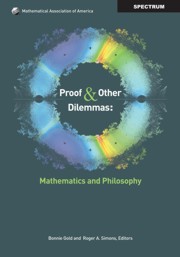Book contents
IV - The Nature of Mathematics and its Applications
Summary
In this final section we consider general questions about the nature of mathematics and about its applicability to the world. The question “What is mathematics?” can be looked at in a number of ways: what the objects of mathematics are, what topics do mathematicians study, what kinds of methods mathematics uses, whether mathematics belongs with the humanities or the sciences, and so on. Robert Thomas proposes an answer to the question by considering mathematics in relationship to the spectrum of the sciences. Guershon Harel proposes an answer from the viewpoint of a researcher in mathematics education. Keith Devlin discusses how the answers to this question have changed over time, and in what direction he sees the answer likely to change over this current century.
Mathematics appears to be abstract and independent of the physical world. Given this, the question of why it turns out to be so useful in scientific investigation of that physical world has been a topic of discussion for many years. The discussion has been carried on more by physicists (who are making use of that mathematics) and by philosophers, than by mathematicians. Mark Steiner, in his chapter, shows that some of the discussion has simply been due to philosophers and physicists meaning different things by the question. However, he also gives an extended example to suggest that there is still a mystery to be investigated. Alan Hájek looks at a particular topic, probability, which has had many interactions with problems external to mathematics throughout its development. He also discusses some of the philosophical confusions that are still being sorted out in this field.
- Type
- Chapter
- Information
- Proof and Other DilemmasMathematics and Philosophy, pp. 243 - 244Publisher: Mathematical Association of AmericaPrint publication year: 2008



